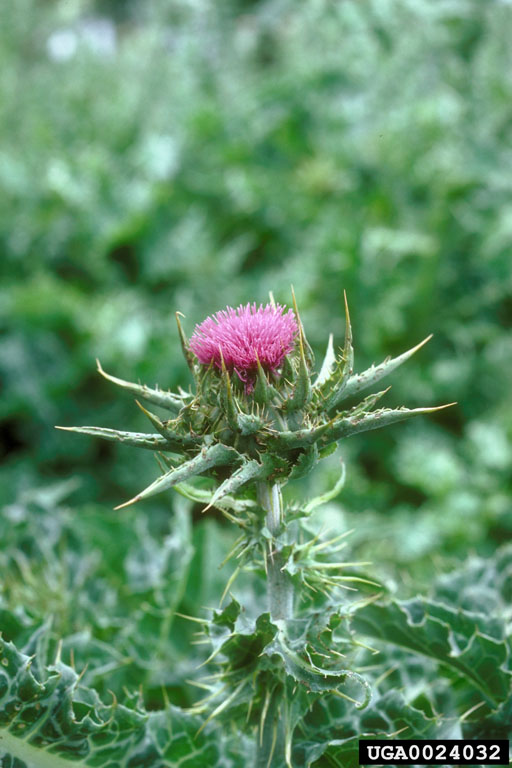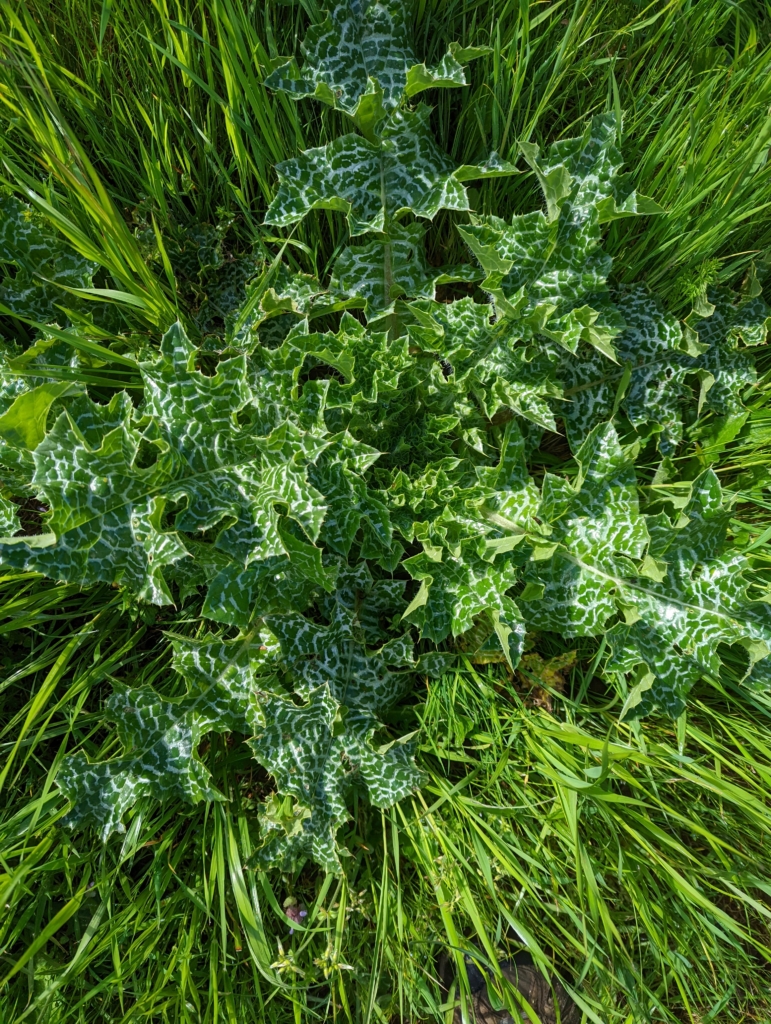Milk Thistle
Silybum marianum
Plant Description
A broadleaved herbaceous annual or biennial thistle with distinctive green and white marbling on spiny-margined leaves. Solitary large purple flower surrounded by 1 to 2-inch spines.
Plant Details
| Life Forms | |
|---|---|
| Habitats | |
| ODA Listing | |
| Soil and Moisture Conditions | |
| Suggested Actions | |
| Shade Preference | |
| Mature Height | 2 -6' |
| Distribution | Found in the Americas, Europe, Australia, New Zealand and its native range.widespread in southwestern Oregon and Willamette Valley. |
| Control | Keep milk thistle from establishing by planting competing vegetation. Hand pull small patches (carefully) and replant with native plants. Cut plant about one inch below soil surface to keep plants from resprouting. Clean equipment to keep from spreading this plant to new sites. |
| Reproduction and Spread | Spreads by seed- one plant can produce 6000 seeds that remain viable for up to 9 years. Seeds are spread by wind, water, mud, equipment and vehicles and in seed packets. |
| Introduced | Native to Middle East, India, North Africa and parts of Europe. |
| Look Alikes | Other thistles including Italian, Canada and Bull Thistles. |
| Impact | Harmful to livestock due to its spines and nitrate poisoning. |
| More Info |
© Marion Soil and Water Conservation District. All Rights Reserved.


